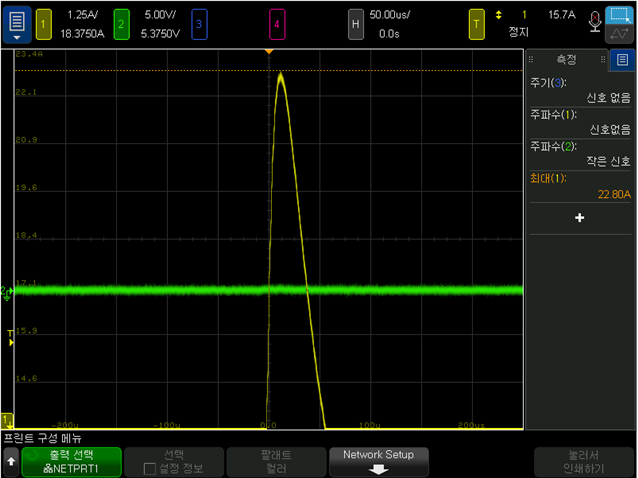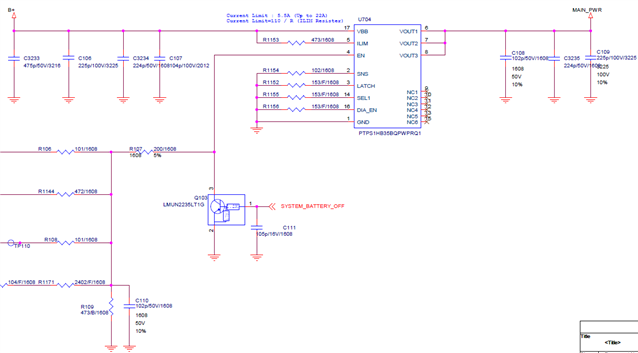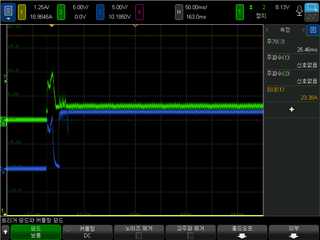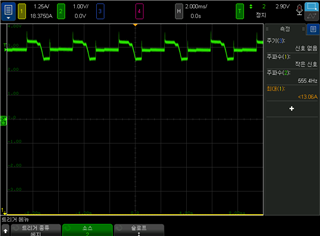Hi, Support Team
If you have a problem during product development using TPS1HB35BQPWPRQ1, we will contact you.
When the power of the product is supplied to the power supply, inrush current occurs, and the product does not operate afterwards.
It is reported that a higher inrush current occurs during the test after mounting on the actual vehicle, and it is reported that the product is dead and does not operate again.
[Iin : Inrush Current, yellow]

[Vin : Blue, Vout : Green]

Are there any defects caused by inrush current?
There seems to be no comment on Inrush in the datasheet, but if there is any data related to Inrush Current, please forward it.
In addition, we will share the circuit diagram, so please review it.

Thanks.
Regards,
MJ



